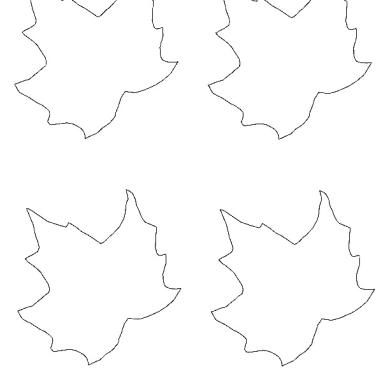Leaves
This document was uploaded by user and they confirmed that they have the permission to share it. If you are author or own the copyright of this book, please report to us by using this DMCA report form. Report DMCA
Overview
Download & View Leaves as PDF for free.
More details
- Words: 316
- Pages: 9
PARTS OF A PLANT -Leaves-
LEAVES
LEAVES Designed to have increased exposure areas to sunlight and gas exchange. Structures: - flat surfaces covered with epidermis - surfaces at right angles to permit maximum light exposure
Functions: - photosynthesis : conversion of light energy into sugar molecules from CO2 and H2O - gas exchange : takes place through stomata - respiration : utilization of sugar to produce energy together with metabolic and waste products
INTERNAL STRUCTURES OF LEAVES 3 main regions : b)Epidermis c)Mesophyll d)Veins
(A) EPIDERMIS Single layer of cells Entire surface of leaf Lower surface distinguishable from upper layer with the presence of stomata Contain no chloroplast except for guard cells Coated with cutin and waxy substances Gland cells – for protection, secrets sticky substances
Stomata :
at lower surfaces of leaves (most plants), upper surfaces (water lilies) and both sides (maize) number range between 1000-1.2 million per square cm bordered by guard cells containing chloroplasts opening / closing controlled by guard cells - factors affecting the opening / closing of guard cells * level of water content inside leaf * starch content functions : permit gas exchange and regulating transpiration
(B) MESOPHYLL Where photosynthesis takes place Between epidermis and endodermis Upper region where cells are lightly packed, barrel-shaped parenchyma cells – region termed palisade mesophyll Lower region consist of loosely packed parenchyma cells – region termed spongy mesophyll
(C) VEINS Various sizes in mesophyll Consist of xylem and phloem tissues Extensive structures throughout leaves, in dicots In monocots – have parallel veins, but no palisade and spongy layers of mesophyll Phloem in veins function to transport carbohydrates produced in mesophyll cells Xylem in veins function for water transport from roots for use in photosynthesis and respiration in mesophyll cells.
LEAVES
LEAVES Designed to have increased exposure areas to sunlight and gas exchange. Structures: - flat surfaces covered with epidermis - surfaces at right angles to permit maximum light exposure
Functions: - photosynthesis : conversion of light energy into sugar molecules from CO2 and H2O - gas exchange : takes place through stomata - respiration : utilization of sugar to produce energy together with metabolic and waste products
INTERNAL STRUCTURES OF LEAVES 3 main regions : b)Epidermis c)Mesophyll d)Veins
(A) EPIDERMIS Single layer of cells Entire surface of leaf Lower surface distinguishable from upper layer with the presence of stomata Contain no chloroplast except for guard cells Coated with cutin and waxy substances Gland cells – for protection, secrets sticky substances
Stomata :
at lower surfaces of leaves (most plants), upper surfaces (water lilies) and both sides (maize) number range between 1000-1.2 million per square cm bordered by guard cells containing chloroplasts opening / closing controlled by guard cells - factors affecting the opening / closing of guard cells * level of water content inside leaf * starch content functions : permit gas exchange and regulating transpiration
(B) MESOPHYLL Where photosynthesis takes place Between epidermis and endodermis Upper region where cells are lightly packed, barrel-shaped parenchyma cells – region termed palisade mesophyll Lower region consist of loosely packed parenchyma cells – region termed spongy mesophyll
(C) VEINS Various sizes in mesophyll Consist of xylem and phloem tissues Extensive structures throughout leaves, in dicots In monocots – have parallel veins, but no palisade and spongy layers of mesophyll Phloem in veins function to transport carbohydrates produced in mesophyll cells Xylem in veins function for water transport from roots for use in photosynthesis and respiration in mesophyll cells.
Related Documents

Leaves
June 2020 13
Leaves
June 2020 13
Leaves
May 2020 18
Autumn Leaves
November 2019 26
Chasing Leaves
May 2020 17